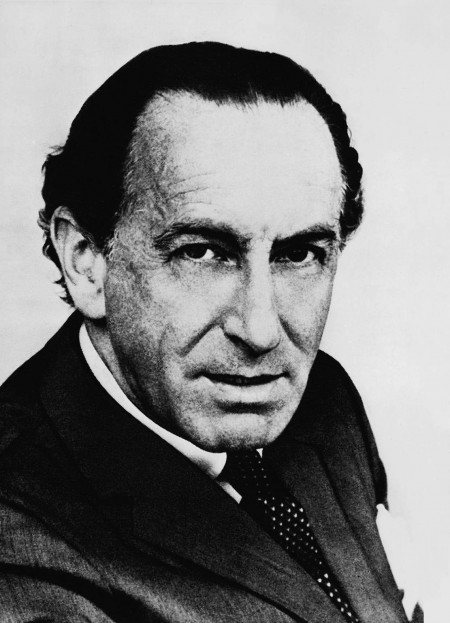21 September 1912, Budapest – 14 December 2005, New York
György Sándor studied music initially with Mrs. Emmi Hoffmanné Bognár and Tibor Szatmári. However his teachers regarded him a child prodigy he gave his first public recital only at the age of eighteen. The excellent preparedness of the young pianist was proven by the program that included such technically also demanding works as Schumann's Piano Sonata in F-sharp minor, the Toccata of Bach and Liszt's Réminiscences de Don Juan among others. His master was Béla Bartók at the Academy of Music, while he studied at the teachers' training institute piano with Arnold Székely and composition with Zoltán Kodály. His career abroad began following the completion of his studies in 1935. He debuted at the Wigmore Hall in London in 1937 and at the Carnegie Hall in New York in 1939. He settled in the United States the same year and became a professor of the University of Michigan. During World War II he did military service in the US Army for two years (from 1943 to 1944) though apart from that period his career as a pianist was rising steadily. He toured South America for the first time in 1939, Australia in 1950, the Far East in 1969.
His repertoire covers a very broad part of piano literature from Bach to the works of Prokoffiev. György Sándor made several recordings for example; he was the first to record the complete piano works of Bartók and Prokoffiev. (His Bartók-recordings won Grand Prix du Disque from the French Academy in 1965.) He was a committed performer of Bartók's works form his youth, and then he became an important supporter in profession and friendship of his former teacher when Bartók spent his last years in New York. The concert held on February 8 in 1946 was an event of historic significance in György Sándor's career, when he premiered the Third Piano Concerto of Bartók with the Philadelphia Symphonic Orchestra under the baton of Jenő Ormándy. He also premiered the piano version of the Dance Suite a month later in the Carnegie Hall in New York.
György Sándor was not a frequent but regular performer on Hungarian stages since the 1960s. Kristóf Csengery wrote the following in the journal Muzsika (Music) about an orchestral recital of him in 1985 in Budapest in connection with his performance of the First Piano Concerto of Bartók: ‘György Sándor belongs to those few who has the right to tell now, four decades after the death of Bartók, that he received the ideological-musical advices for the performances of the works of Bartók from first hand from the composer himself, and therefore he is an inheritor of the Bartók-tradition [...] György Sándor played Bartók this evening in a very accurate, unbiased way; the tension of rhythm, the plasticity of sounding, the virtuosity could all prevail only functionally as dependents of forming; while the basic mood of the work was hallmarked by a slight distancing and objectivity all the while, as if the performer's intent would have been that the work should at the same time show and could look at itself quasi from outside, as well.' While at the occasion of one of his recitals in 1990 Csengery wrote the following: ‘The freshness and drive with which the pianist of Hungarian origins living in America still tours the world with his artistic career of a half of a century is imposing [...] compiling such programs that would thoroughly test a young pianist at the peak of his power and capacity, as well [...] The [Bartók-] interpretation heard this time proved the authenticity of the soloist's performance with its spareness and lively rhythm.'
He transferred his experiences in connection with the works of Bartók to the younger generation of musicians at the international Bartók Seminary in the 1970s. The greatness of his artistry lies in the permanent balance of awareness, technical elaborateness and the freedom of interpretation. He told the following in an interview about that: ‘If we approach music intellectually then we are craftsmen while if emotionally then we are amateurs.'
Sz. T.



